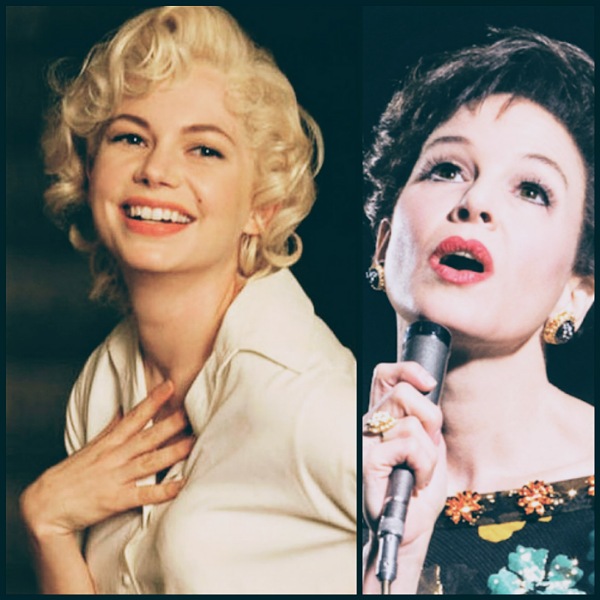
As a new Judy Garland biopic is released, Inkoo Kang looks at how classic female entertainers are portrayed, over at Slate. Her analysis is interesting, though I would argue that ageing is not as central to My Week With Marilyn (set at the peak of her career) as it is to Judy and Film Stars Don’t Die in Liverpool (another recent biopic of a neglected screen icon, Gloria Grahame), which are both set at the end of the womens’ lives. In fact, the strongest link between all three subjects might be their loneliness.
“It’s obvious enough why Judy and company keep getting made … [Michelle] Williams used her portrayal as Monroe to play against type, injecting a dose of flirty, cunning sexuality into her screen image and earning herself a Golden Globe and an Oscar nomination in the process … These films do revise the public images of their titular characters in meaningful ways … Monroe—still considered the ultimate dumb blonde in too many circles—is reclaimed as a serious actress with lofty ambitions.
But these films are also, by design, not as empathetic toward their subjects as they could be. Each movie is too enamored of its legend, of her talent and beauty, to acknowledge that her circumstances and pathologies aren’t exceptional but widely shared, borne largely of gendered inequality: unequal pay, imbalance of power, public hypersexualization, and the fast-approaching or long-past expiration date on her usefulness to Hollywood. It’s likely not a coincidence that all three movies are set in England, far from where any Hollywood star ostensibly should be …
But if the film industry’s #MeToo movement has reminded us of anything, it’s that, even in Hollywood, women’s experiences of pressure and discrimination aren’t so much unusual as devastatingly similar. Too many women lived in silence and shame, believing that their encounters were unique, or even that the abuse was somehow their fault, but after the dam broke, we understood how many of these stories were practically interchangeable, no matter the stars’ wattage, or whether they were stars at all.
But by failing to account for the unfortunate commonness of their fates, at least within the entertainment industry, the movies of this genre tend to become opportunities to focus morbidly and myopically on the self-destructive habits of a flailing figure, rather than understand the larger context that gave rise to her. The individual struggle of a Garland, Monroe, or Grahame may be inherently interesting in tight close-up, but these movies would be more revealing if they zoomed out a little to show the fuller picture.”




